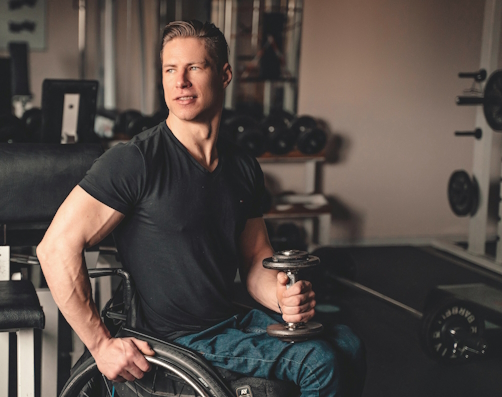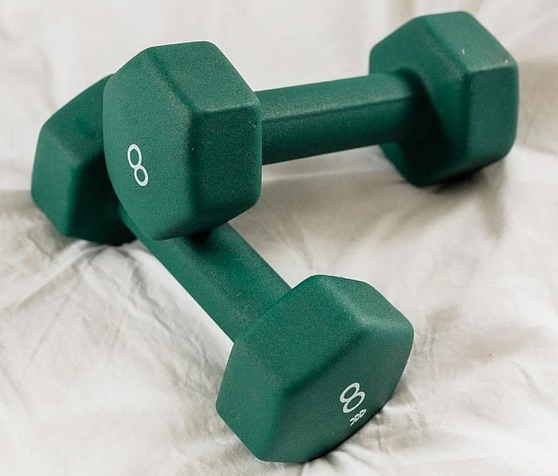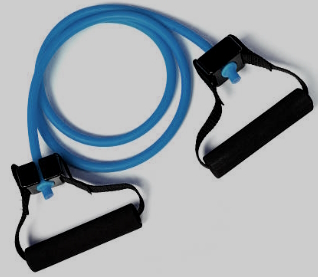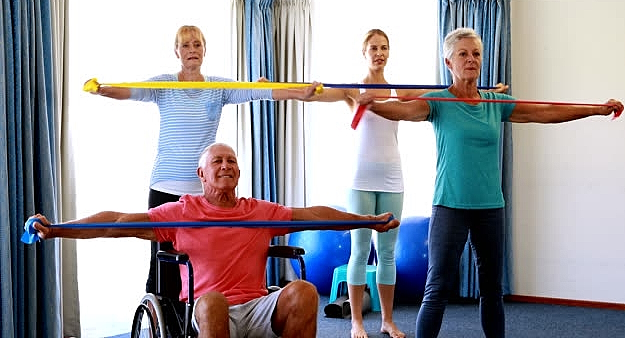Wheelchair Exercise
Engaging in a regular wheelchair exercise program can improve your health and wellbeing. Sitting in a wheelchair for long periods of time can cause annoying restlessness and discomfort. It can also make you vulnerable to an array of physcial health concerns, such as muscle atrophy, osteoporosis, cardiovascular issues, respiratory problems and more.

That's why it's important to commit to exercising regularly and staying as active as possible. Adhering to a daily fitness routine – whether basic or advanced – will support your health and keep the body toned so you feel your best.
An exercise program will help increase strength, improve mobility, strengthen the heart and lungs, and help control weight. Exercising will also promote bone health to ward off osteoporosis, as well as prevent falls and fractures.
Everyone has a unique situation, so consult your healthcare professional to determine what type of wheelchair exercise program and which exercises are appropriate for you.
How to Begin
Ask your doctor or physical therapist to create a detailed workout plan catered to your specific needs. Then, have him/her regularly monitor your progress and make adjustments on a regular basis. Your wheelchair exercise regime will likely include the use of resistance training bands and/or free weights. You will be advised specifically how to use these strength-building aids.
With resistance bands or tubes, you wrap them securely around a door, pole, arm of your wheelchair, or other stable object. Then, you pull the bands towards you or away from you to work your muscles. You can use the bands to do arm and leg extensions, shoulder rotations and pull downs.
 Dumbells (Free Weights) for Strength Training Dumbells (Free Weights) for Strength Training |
 Resistance Tubes for Weight Bearing Exercises Resistance Tubes for Weight Bearing Exercises |
 Exercise Class with Resistance Bands for Strength Training
Exercise Class with Resistance Bands for Strength TrainingWhen strength training with free weights, you will use dumbbells and have a routine comprised of different repetitions and sets designed work different muscle groups.
In addition to your workout plan, you may want to ask your doctor or therapist who if you can also supplement your wheelchair exercise workouts with fitness websites, streaming programs or DVDs designed for keeping fit and exercising while in a sitting position.
Remember to keep a positive attitude. Start slowly and apply discipline to get into a regular exercise and fitness program. Always consult with your provider to ensure you are progressing appropriately. And enjoy the results of your fitness efforts.
________
Information for this article by Helen Hecker, R.N.
Related Information - Wheelchair Exercise
Wheelchair Racing
Wheelchair Golf - Adaptive Golf
History of the Paralympic Games
Wheelchair Basketball Rules
Wheelchair Football
World Wheelchair Sports Organization
Wheelchair Dancing
Paralympic Games
Popular ArticlesTypes of Mobility Chairs Wheelchair Sports Activities Helpful Resource Organizations Mobility Scooter Buying Tips Portable Ramp Options |


